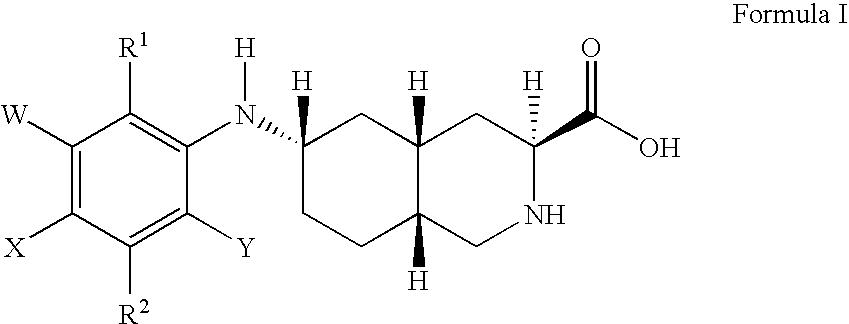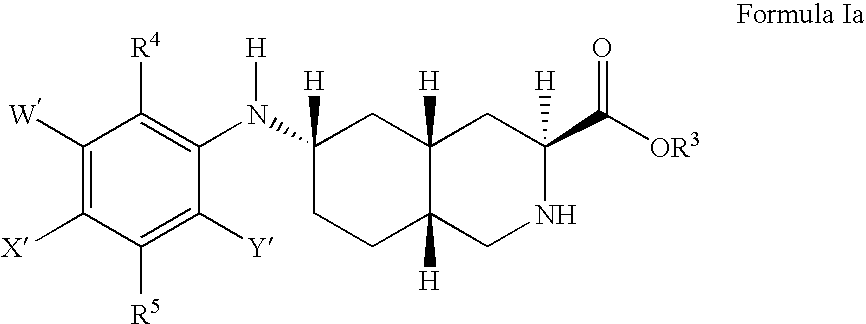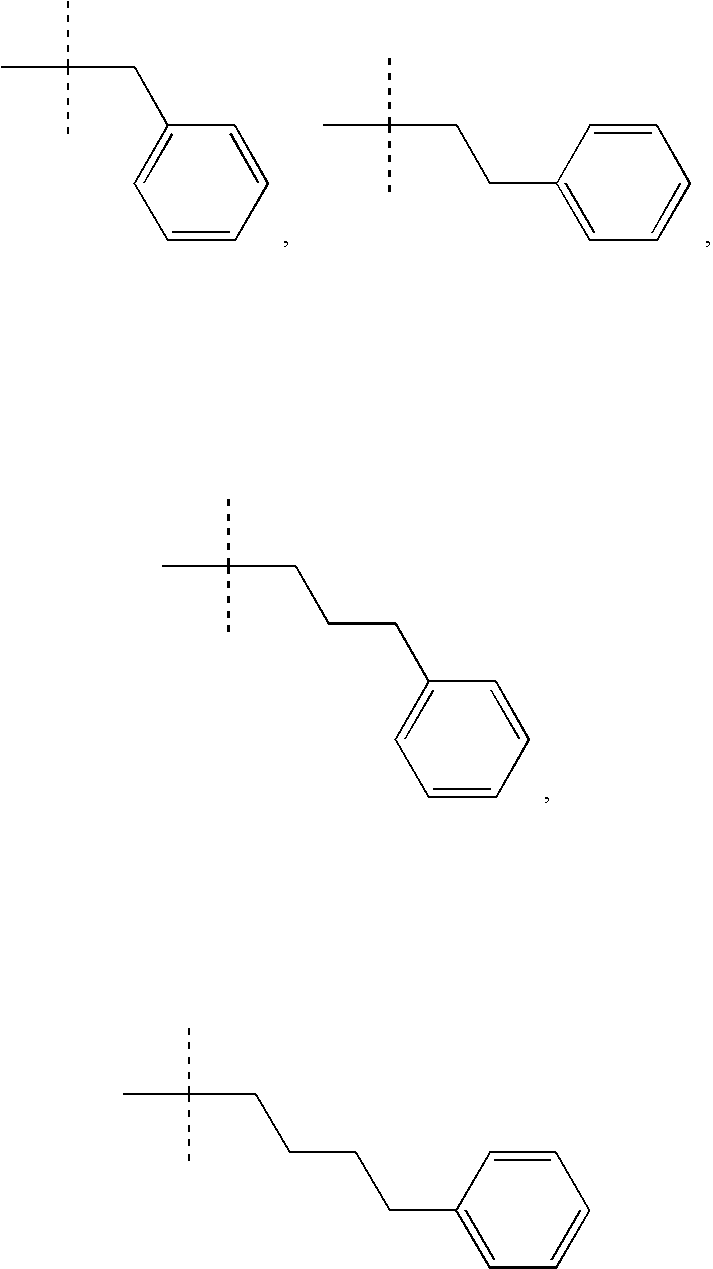Excitatory amino acid receptor antagonists
a technology of amino acid receptors and antagonists, applied in the field of excitatory amino acid receptor antagonists, can solve problems such as neuronal cell damage or loss, and achieve the effect of treating or preventing pain or migrain
- Summary
- Abstract
- Description
- Claims
- Application Information
AI Technical Summary
Benefits of technology
Problems solved by technology
Method used
Image
Examples
preparation 1
Ethyl (3S, 4aR, 6S, 8aR) 6-amino-2-methoxycarbonyl-1,2,3,4,4a,5,6,7,8,8a-decahydroisoquinol-3-carboxylate
[0125]
A. Ethyl (3S, 4aR, 6S, 8aR) 6-benzylamino-2-methoxycarbonyl-1,2,3,4,4a,5,6,7,8,8a-decahydroisoquinoline-3-carboxylate.
[0126]To a room temperature solution of ethyl 6-oxo-2-methoxycarbonyl-decahydroisoquinoline-3-carboxylate (4 g, 14.1 mmol), benzylamine (1.71 g, 15.9 mmol), and acetic acid (1.27 g, 21.2 mmol) in 1,2-dichloroethane (20 ml), sodium triacetoxyborohydride (5 g, 23.3 mmol) was added. The mixture was stirred under an atmosphere of nitrogen for 15 hours at room temperature. The reaction was quenched by adding aqueous saturated sodium bicarbonate, and extracted with dichloromethane three times. The organic layer was dried over sodium sulfate and evaporated to give 7 g of the title compound. The crude material was used in next step without further purification.
[0127]Ion Electrospray Mass Spectrum M+1: 375.
B. Ethyl (3S, 4aR, 6S, 8aR) 6-amino-2-methoxycarbonyl-1,2,3,4...
example 1
Preparation of (3S, 4aR, 6S, 8aR) 6-(3-chloro-2-(1(2)H-tetrazol-5-yl)-phenylamino)-1,2,3,4,4a,5,6,7,8,8a-decahydroisoquinoline-3-carboxylic acid dihydrochloride
[0131]
A. Ethyl (3S, 4aR, 6S, 8aR) 6-(3-chloro-2-cyano-phenylamino)-2-methoxycarbonyl-1,2,3,4,4a,5,6,7,8,8a-decahydroisoquinoline-3-carboxylate.
[0132]To a mixture of ethyl 6-oxo-2-(methoxycarbonyl)-decahydroisoquinoline-3-carboxylate (142 mg, 0.5 mmol), 2-amino-6-chloro-benzonitrile (760 mg, 5.0 mmol), and glacial acetic acid (0.36 mL, 6.0 mmol) in 1,2-dichloroethane (5 mL), was added 5 g of of 4A molecular sieves (excess of dehydrating agent just to force reaction to completion) and stirred at room temperature overnight under nitrogen. Then, sodium triacethoxyborohydride solid (211 mg, 1.0 mmol) was added and the reaction mixture stirred under nitrogen at room temperature for two days. The reaction mixture was then filtered through celite and sodium bicarbonate was added until pH 8, followed by addition of ethyl acetate. The ...
example 2
Preparation of 2-ethyl-butyl (3S, 4aR, 6S, 8aR) 6-(3-chloro-2-(1(2)H-tetrazol-5-yl)-phenylamino)-1,2,3,4,4a,5,6,7,8,8a-decahydroisoquinoline-3-carboxylate dihydroiodide
[0138]
2-ethyl-butyl (3S, 4aR, 6S, 8aR) 6-(3-chloro-2-(1(2)H-tetrazol-5-yl)-phenylamino)-1,2,3,4,4a,5,6,7,8,8a-decahydroisoquinoline-3-carboxylate dihydroiodide is prepared essentially as described for Example 5 herein.
PUM
| Property | Measurement | Unit |
|---|---|---|
| pH | aaaaa | aaaaa |
| pH | aaaaa | aaaaa |
| depth | aaaaa | aaaaa |
Abstract
Description
Claims
Application Information
 Login to View More
Login to View More - R&D
- Intellectual Property
- Life Sciences
- Materials
- Tech Scout
- Unparalleled Data Quality
- Higher Quality Content
- 60% Fewer Hallucinations
Browse by: Latest US Patents, China's latest patents, Technical Efficacy Thesaurus, Application Domain, Technology Topic, Popular Technical Reports.
© 2025 PatSnap. All rights reserved.Legal|Privacy policy|Modern Slavery Act Transparency Statement|Sitemap|About US| Contact US: help@patsnap.com



